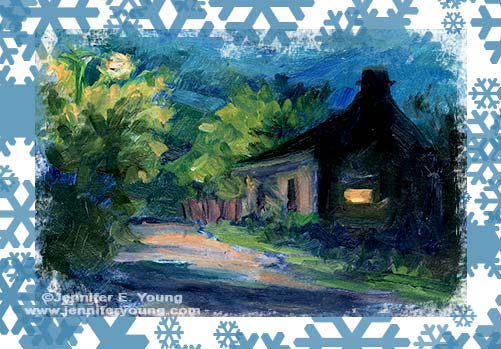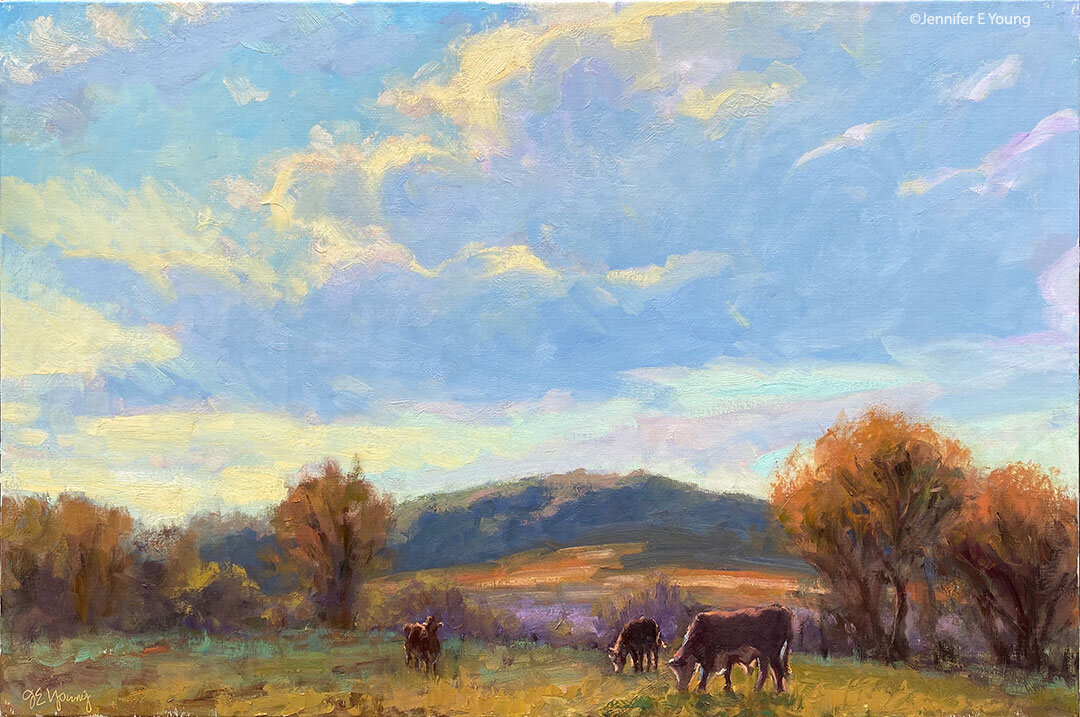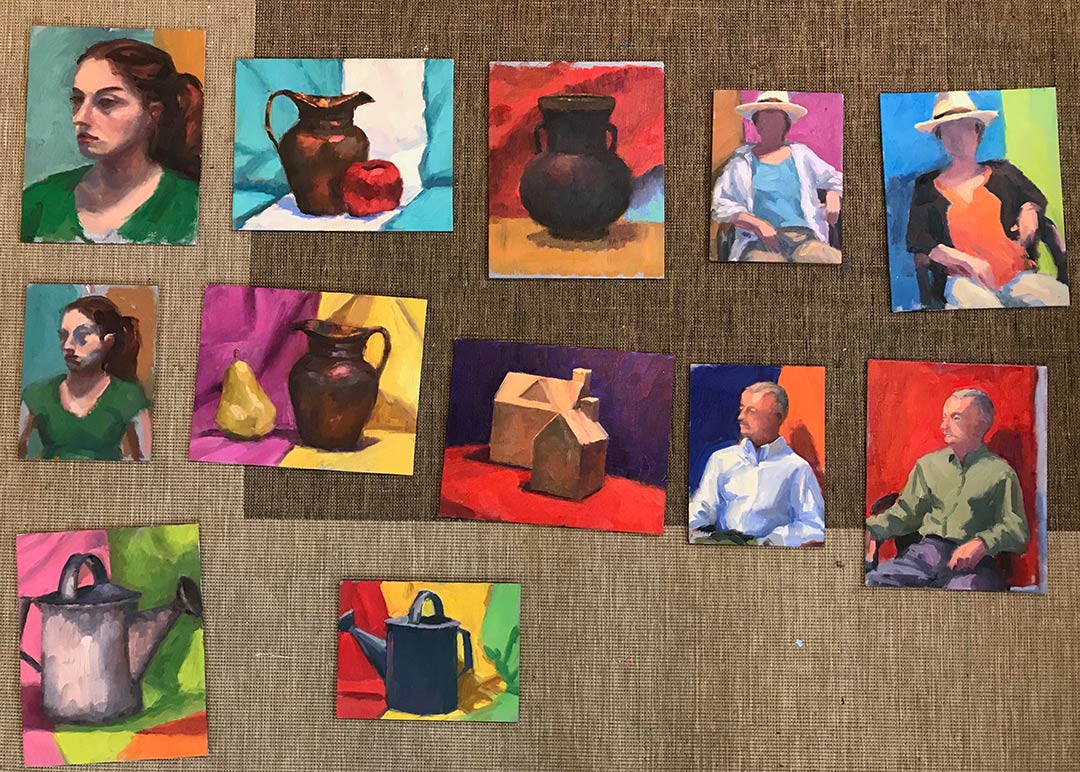French village painting back in progress; plus a blog award!
/I managed to slip away for a few short hours yesterday to work on the oil painting I'd sketched out before Christmas. I have some real challenges with photography at my temporary painting site, so the photo is not great. But hopefully it can give an idea and I can figure out a better way to photograph as I move further along. Here I'm just trying to establish a good sense of notan in my design (AKA: my pattern of light and shadow):

In looking at the digital image of this painting, I am seeing too much busy-ness in the shadow pattern on the ground, so I should probably benefit from simplifying this somewhat. This is where positioning a large mirror across from your painting station really comes in handy. The reverse image in the mirror really helps to provide an alternate view so that you can see errors and make adjustments. I'm lacking a mirror right now in my temporary studio setup. In addition, I have very little room to step back. So it's often not until I get home and download my digital shots that I am able to see the "fresh view" .
In addition to finally getting back to work on this painting, at long last I'd like to thank lovely artist Amy Sullivan for her kind recognition of my blog some time ago with an Art y Pico Award. I am just embarrassed it has taken me so long to respond to this, but I guess it speaks to the sense of overwhelm I've been experiencing during these last couple of months. In any event, I hope it's not too late to pick up the torch.
The Rules:
1. You have to pick 5 blogs that you consider deserve this award through creativity, design, interesting material, and also contributes to the blogger community, no matter of language.
2. Each award should have the name of the author with a link to their blog.
3. Award winners have to post the award with the name and link to the blog of the person who gave them the award.
4. Post a comment on each recipient's blog so they know they've been picked.
5. Show these rules and this paragraph explaining the awards origination. "The Arte y Pico Award" has arisen from the daily visits that I make to many blogs which nourish and enrich me with creativity. In them, I see dedication, creativity, care, comradeship, but mainly, ART, much art. I want to share this prize with all those bloggers that entertain and enrich me day to day. Doubtlessly, there are many and it will be hard to pick just a few." ~Without further ado, please check out these wonderful artists~
~1~ Marilyn King, a wonderful artist whose work and blog has grown by leaps and bounds ~ check her out~
~2~ Rick Nilson, who makes truly unique and imaginative paintings, mostly of the Outer Banks of North Carolina, with cryptic quirky comments to go along with them. I always enjoy my visits to his blog, and I'm sure you will too.
~3~ Dianne Mize, for her wonderful work on her Bagatelles and Meanderings blog. From what I've read on her blog she's run out of "Tag Steam". I can actually understand. This tagging stuff takes time, so in a way I hate to harass her ;-) But even if she can't participate I couldn't help but mention her blog any way--I really love her paintings and drawings and the thoughts she shares about her processes are wonderfully interesting.
~4~Keith Wilkinson~I first learned of his blog, The Filbert and Rigger from Marilyn King and I've really enjoyed following his work and seeing his newest, mostly e plein air paintings. Very inspiring!
~5~ Molly Young~my niece. Her blog is relatively new, but every time I visit I am impressed by her growth and her willingness to try new things. Go Molly!





 Â
 








